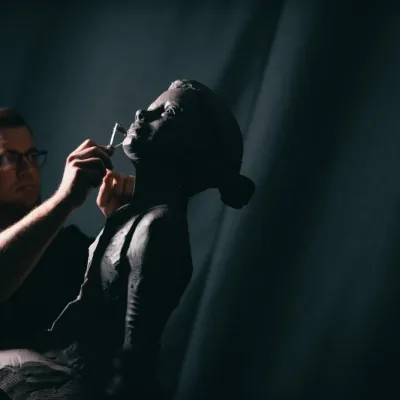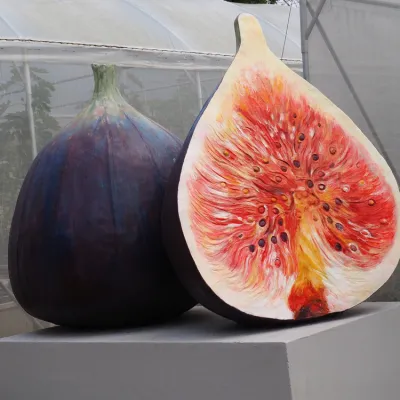- Konu Başlıkları
- Sculpture Production: Art Becoming Physical
- What is Sculpture Production?
- How is Sculpture Made?
- 1. Design and Planning Stage
- 2. Modeling Stage
- 3. Mold and Casting Stage
- 4. Finishing and Surface Treatments
- 5. Assembly and Placement
- Sculpture Production: Where is it Used?
- Express Your Art with Sculpture Production
Sculpture Production: Art Becoming Physical
Sculpture production is, beyond being a branch of art, an effective way to leave a mark on history and culture, and to make a message permanent. The sculpture manufacturing process is the transformation of a creative idea into a concrete object. In this article, we will explore the details of this process, the materials used, and the important stages by focusing on the questions of what is sculpture production and how sculpture production is done. While sculpture production requires a deep artistic process, it also requires technical knowledge and expertise. Sculpture production is an artistic journey that contains originality in every detail.
[widget-133]
What is Sculpture Production?
Sculpture production refers to the processes used to create a work of art in physical form. Making sculpture is not only shaping materials, but also creating meaning, emotion, and culture. In the sculpture manufacturing process, artists can create a figure, object, or abstract design. Sculpture production offers the viewer a new visual experience by transferring the artist's imagination to materials.
The answer to the question of what is sculpture production is hidden at the starting point of this process. Sculpture making is an art that requires attention, skill and patience at every stage. Each sculpture reflects the artist's feelings, messages and technical knowledge. This goes far beyond shape and texture and expresses deep meanings.

How is Sculpture Made?
The question of how to make sculpture is the basis of understanding and creating art. The sculpture making process consists of a series of stages from the first stage where ideas begin to materialize to the final form of the sculpture. These stages may vary depending on the materials used, the purpose of the sculpture and the complexity of the design.
1. Design and Planning Stage
The first step in the sculpture production process is for the artist to decide what to do. Sculpture making requires planning. At this stage, the artist determines the dimensions, shape and structure of his sculpture. If the sculpture is to be a figurative design, the details require much more care. In addition, the area where the sculpture will be used also affects the design process; indoor sculptures are made using different techniques and materials than outdoor sculptures.
2. Modeling Stage
One of the most critical steps in sculpture production is the modeling stage. Sculpture manufacturing begins with the creation of the main shape. This stage is the most basic process for making a sculpture. The main form of the sculpture is determined and the material is started to be processed to give it shape.
Clay, Resin and Other Materials: The main form of the sculpture is usually made with clay, resin or plastic materials. While the artist works on the basic shape of the sculpture, the material is processed according to the subtleties of the figure.
Detailing: After the shape is created, details are added. In this stage, work is done down to the finest points of sculpture production.
3. Mold and Casting Stage
After the modeling process is completed, the mold is taken. In this step, the sculpture manufacturing comes to a final stage to be completed. When the mold is taken, the artist prepares the main figure of the sculpture for casting. This stage is usually done with metal or another durable material. If the sculpture is going to be made of stone or metal, the casting process is done.
4. Finishing and Surface Treatments
The last stage of sculpture production is the final workmanship and surface treatments. In this stage, the sculpture takes its final shape. The surface is smoothed, painting is done and other necessary processes are performed. An oxidized surface patina can be added to metal sculptures or details can be highlighted with surface workmanship in stone sculptures.
5. Assembly and Placement
When the sculpture manufacturing is completed, the assembly process is carried out and the sculpture is placed in the targeted area. Care is taken to ensure that the area where the sculpture will be placed is suitable for the dimensions and aesthetic features of the sculpture. At this stage, all the details in the artist's design become visible in the area where the sculpture is made.

Sculpture Production: Where is it Used?
The areas of use of sculpture are quite wide. Here are some areas where this art is used:
Cultural and Historical Areas: Historical busts, figurative sculptures such as the Atatürk bust are the most common examples of sculpture production. Such sculptures are usually used in public areas, schools or cultural heritage areas.
Events and Launches: Decorative sculptures are used to visually convey brand messages in events and launches. Sculpture manufacturing can create eye-catching elements in such events.
Office and Corporate Areas: Decorative sculptures used in offices and workplaces are preferred as figures that reflect the company culture. Custom sculpture production provides an artistic touch in corporate areas.
Interiors and Gardens: Sculpture production can be used as elements that beautify interiors or gardens. Sculptures produced with durable materials such as wood, stone or metal have an aesthetic value in homes or gardens.
[widget-134]
Express Your Art with Sculpture Production
Sculpture production is not just an art, it is a form of expression. With sculpture production, you can tell your brand or personal story in a visual language. While sculpture production leaves an artistic mark in every detail, it also creates an emotional bond. As Erlas, we provide you with customized and aesthetic solutions in sculpture production, allowing you to express your brand in an artistic way.














